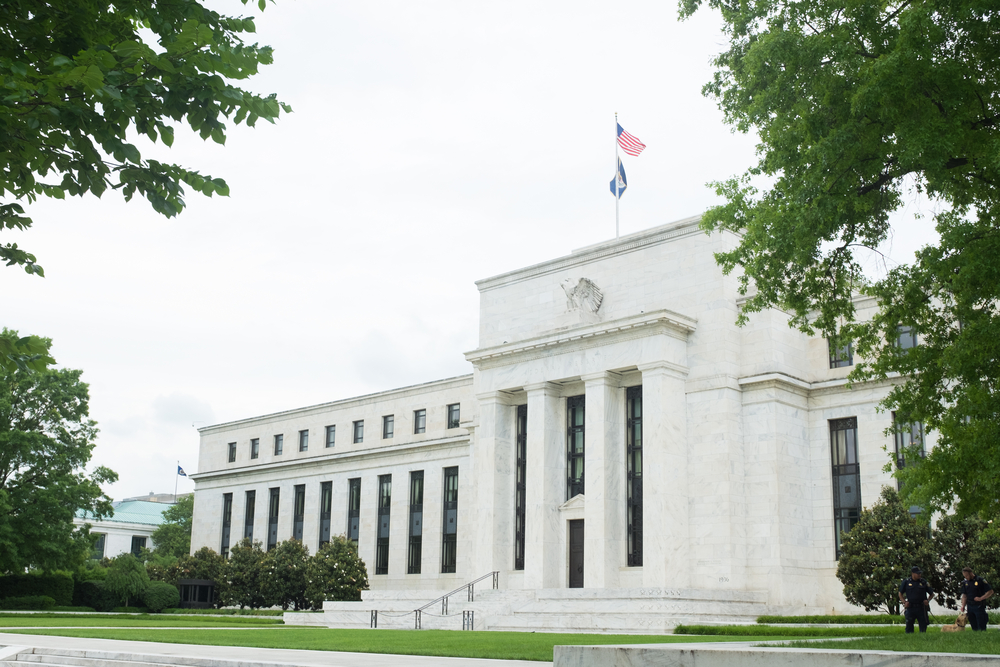Federal Reserve Task Force: Ripple Improves Speed and Transparency of Global Payments - WHY YOU MUST INVEST IN XRP NOW!!
By ripple.

Today, after two years of work, the Federal Reserve released its Faster Payments Task Force’s action plan for bringing faster payments to the United States, highlighting Ripple’s ability to underpin the next generation of cross-border payments.
Set up in 2015 after the Fed recognized the need to spur improvements in payments, the Task Force brought together a diverse group of 320 stakeholders – including banks, regulators, end users and technology companies – to create a roadmap for modernizing the U.S. payments infrastructure.
Ripple played a leading role in establishing this future vision for payments. Early in the process, I was elected to serve on the Steering Committee to represent tech companies and provide expertise on emerging technology and blockchain.
One of the Task Force’s first achievements was to establish a set of effective criteriafor faster payments. This served as a long-term target for new solutions, defining the capabilities needed to meet the market demands of 2020 and beyond. This framework includes 36 criteria, grouped into six categories —speed, efficiency, safety and security, legal, governance, and ubiquity – with over 100 detailed benchmarks for each. True to being a future vision, no existing solution meets all of the criteria.
Next, the Task Force requested proposals for ways to fulfill the criteria, each of which being assessed by McKinsey.
Framework Calls for Improved Cross-Border Infrastructure
A distinguishing factor of the roadmap is a call for substantially improved cross-border payments. Currently, sending money abroad from the U.S. takes 2-4 days with little transparency into cost, status and delivery time. These pain points are a major barrier to economic growth, limiting companies that could otherwise benefit from importing materials or selling their goods overseas. These realities have long plagued remittances and consumer services.
Ripple Stands Out for Speed and Transparency of Payments
The Task Force received 22 proposals, 16 of which completed the process, including Ripple.
Ripple put forth the Interledger-based solution that enables improved messaging and tracking for real-time payments – standing out as the only proposal focused on solving today’s friction with cross-border payments.
The McKinsey assessment gave high marks to Ripple noting:
“Ripple enables FIs the ability to operate cross-border payments faster than the 2-4 days common today.”“The solution bolsters the certainty of the cross-border payment experience by providing end-to-end transaction visibility to banks, as well as settlement confirmation.”“Ripple enables more transparency in the total cost of a payment to the payee prior to authorization, if participating banks are willing to provide this transparency.”
Being “flexible enough to be integrated directly into an FI’s [financial institution] payment hub, or…integrated into a third-party provider’s platforms to which FIs are already connected” shows the solution is well designed for different use cases across a range of financial institutions in the U.S.
What’s Next: Interoperability and Liquidity
The report released today defines ten action items to move the market forward. These include a deeper focus on emerging technology, a work stream on cross-border payments and the formation of a governance group to support interoperability. Ripple will continue to play an active part in these efforts.
On the topic of interoperability, Ripple supports the Task Force’s belief in a multi-provider market, as evidenced by the Interledger Protocol (ILP) which is designed to provide technical interoperability across networks and providers. In fact, a recent Fed report noted that ILP “could spur further innovation and adoption” of new solutions. It was also a key feature in the Bank of England’s recent successful proof of conceptusing Ripple to enable real-time cross-border payments.
Within the emerging technology and cross-border work streams announced, Ripple plans to focus on how the use of digital assets, like XRP, can enable a new paradigm of liquidity and capital efficiency. This work stream provides the perfect venue to educate the market and serve as a catalyst for broader adoption of digital assets.
Building on the Momentum
Since submitting the proposal in May 2016, Ripple announced the launch of a bank advisory board, the Global Payments Steering Group, to help define rules and formalized standards for payment activity across Ripple’s network.
Additionally, Ripple now has 75 customers, including Santander, BBVA, Standard Chartered and Japan’s SBI Remit, which has recently partnered with Siam Commercial Bank and Ripple to make it faster and easier for 45,000 Thai nationals living in Japan to send money home.
It has been a tremendous honor to to participate in the Task Force and serve on the Steering Committee. Ripple would like to extend a sincere thanks to the Federal Reserve for supporting this effort and the Task Force for its commitment and helpful input on our proposal. We’re eager to see the future of payments come to life.
Comments